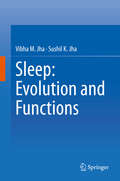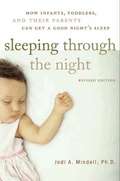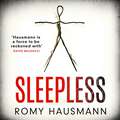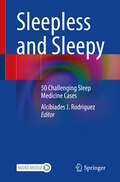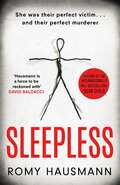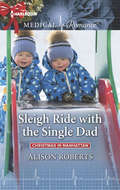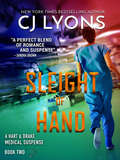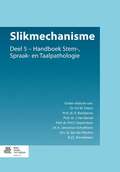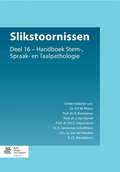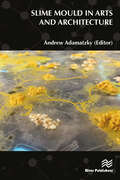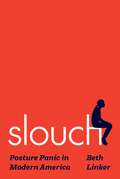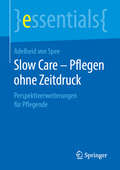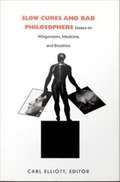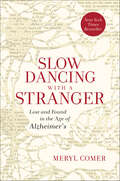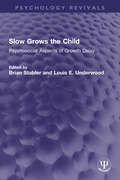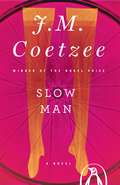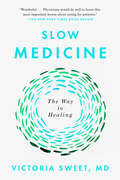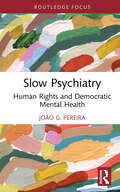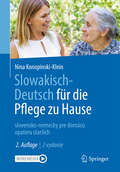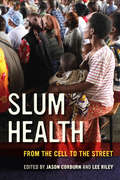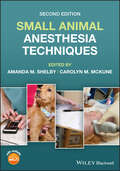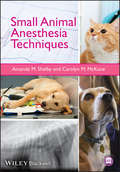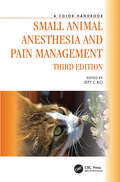- Table View
- List View
Sleep: Evolution and Functions
by Sushil K. Jha Vibha M. JhaThis book discusses the evolution of sleep and its possible function in the higher invertebrates and vertebrates, including humans. It describes the current concept of sleep and its functions, based on research on the mammalian system. To date, electrophysiological recordings of the brain waves, muscle activity, and eye movements are the only tools available for characterizing the sleep architecture in the majority of animals. In mammals and birds, only two distinct types of sleep are found – non-rapid eye movement (NREM) and rapid eye movement (REM) sleep. Since the discovery of REM sleep, studies have been performed to understand the purpose of the two distinct sleep states in higher vertebrates (birds and mammals), and how REM sleep was evolved. The book summarizes the role of both REM and NREM sleep in the proper functioning of the brain and body. It covers various aspects of the role of sleep in important physiological processes, including memory consolidation, induction of synaptic plasticity, energy restoration, enhancing immune response, and maturation of neuronal circuitries during early life. Lastly, the book reviews the effects of chronic/acute sleep deprivation on memory consolidation, obesity, and the immune system in animal models and humans.
Sleepiness: Causes, Consequences and Treatment
by Michael J. Thorpy Michel BilliardWritten and edited by leading clinicians and researchers in sleep medicine, this is the first book to focus on the causes, consequences and treatment of disorders of excessive sleepiness. Extensive coverage is provided for all known causes of sleepiness, including sleep deprivation, obstructive sleep apnea syndrome, narcolepsy and other hypersomnias of central origin, shift work, and medical and psychiatric disorders. Since many causes of sleepiness are difficult to differentiate from each other, and treatment modalities can vary greatly from one disorder to another, this book helps the clinician to formulate a differential diagnosis that will ultimately lead to the correct diagnosis. Epidemiology, evaluation of the sleepy patient, diagnostic investigations including neuroimaging, subjective and objective testing, cognitive effects of sleepiness, motor vehicle driving issues, medico-legal aspects of sleepiness, and therapy are also discussed in detail. This is an essential resource for neurologists, psychiatrists and sleep specialists.
Sleeping Through the Night: How Infants, Toddlers, and Parents Can Get a Good Night's Sleep
by Jodi A. MindellRight after "Is it a boy or a girl?" and "What's his/her name?," the next question people invariably ask new parents is "Are you getting any sleep?" Unfortunately, the answer is usually "Not much." In fact, studies show that approximately 25% of young children experience some type of sleep problem and, as any bleary-eyed parent will attest, it is one of the most difficult challenges of parenting. Drawing on her ten years of experience in the assessment and treatment of common sleep problems in children, Dr. Jodi A. Mindell now provides tips and techniques, the answers to commonly asked questions, and case studies and quotes from parents who have successfully solved their children's sleep problems. Unlike other books on the subject, Dr. Mindell also offers practical tips on bedtime, rather than middle-of-the-night-sleep training, and shows how all members of the family can cope with the stresses associated with teaching a child to sleep.
Sleepless
by Romy HausmannCOMING IN 2021: THE MIND-BENDING NEW THRILLER FROM THE NO.1 BESTSELLING AUTHOR OF DEAR CHILDIt's over, my angel. Today I'm going to die. Just like her. He's won.It's been years since Nadja Kulka was convicted of a cruel crime. After being released from prison, she's wanted nothing more than to live a normal life: nice flat, steady job, even a few friends. But when one of those friends, Laura von Hoven - free-spirited beauty and wife of Nadja's boss - kills her lover and begs Nadja for her help, Nadja can't seem to be able to refuse.The two women make for a remote house in the woods, the perfect place to bury a body. But their plan quickly falls apart and Nadja finds herself outplayed, a pawn in a bizarre game in which she is both the perfect victim and the perfect murderer . . .Dark secrets past and present collide in this haunting novel of guilt and retribution from the internationally bestselling author of Dear Child.PRAISE FOR ROMY HAUSMANN:'A chilling, original and mesmerizing work. Hausmann is a force to be reckoned with. You can't stop reading' David Baldacci'Deliciously dark' Alice Feeney'Very compelling' Peter James'Disturbingly good' Lesley Kara(P)2021 Quercus Editions Limited
Sleepless and Sleepy: 50 Challenging Sleep Medicine Cases
by Alcibiades J. RodriguezThis book presents 50 of the most interesting and challenging sleep medicine clinical cases encountered by leaders in the field. The cases encompass the full spectrum of sleep medicine, with topics covering neurology, pulmonology, psychiatry, psychology, ENT, and beyond. In addition, adults and pediatric cases will be covered. Chapters that feature cases follow a similar format. A brief clinical history, is followed by physical examination, investigations/studies, differential diagnosis, discussion and management, and final or possible diagnosis. These cases are open to discussion and include teaching points. 50 Challenging Sleep Medicine Cases will intrigue residents interested in sleep medicine, sleep medicine fellows and professionals interested in case review for certification exams and to discuss unusual cases, as well as neurologists, psychiatrists, psychologists, neuropsychologists.
Sleepless: the mind-bending new thriller from the bestselling author of DEAR CHILD
by Romy HausmannTHE MIND-BENDING NEW THRILLER FROM THE NO.1 BESTSELLING AUTHOR OF DEAR CHILD'Hausmann's novel has the feel of a nightmare, unfolding at breakneck speed' SUNDAY TIMESIt's been years since Nadja Kulka was convicted of a cruel crime. After being released from prison, she's wanted nothing more than to live a normal life: nice flat, steady job, even a few friends. But when one of those friends, Laura von Hoven - free-spirited beauty and wife of Nadja's boss - kills her lover and begs Nadja for her help, Nadja can't seem to be able to refuse. The two women make for a remote house in the woods, the perfect place to bury a body. But their plan quickly falls apart and Nadja finds herself outplayed, a pawn in a bizarre game in which she is both the perfect victim and the perfect murderer . . . Dark secrets past and present collide in this haunting novel of guilt and retribution from the internationally bestselling author of Dear Child.PRAISE FOR ROMY HAUSMANN:'Chilling' People Magazine'[A] tantalizingly disturbing debut . . . As enthralling as it is thought-provoking' New York Times'Hausmann is a force to be reckoned with. You can't stop reading' David Baldacci'Deliciously dark' Alice Feeney'Very compelling' Peter James'Disturbingly good' Lesley Kara
Sleigh Ride with the Single Dad
by Alison RobertsHer secret Christmas wish Dr. Grace Forbes's dramatic first day in Manhattan Mercy ER is unforgettable-especially when she runs into her old flame, ER chief Charles Davenport, again! That spark is still there between them but they're different people now-after losing his wife, Charles is a single dad to adorable twin boys, while Grace has survived cancer but lost her dream of having children. Yet, as the weather gets colder, she is drawn into the warmth of his family-could he make her Christmas wish come true?
Sleight of Hand (Hart and Drake Medical Suspense #2)
by CJ LyonsSecond in the series that’s “a perfect blend of romance and suspense” from the New York Times–bestselling author of Nerves of Steel (Sandra Brown).Two months ago Dr. Cassandra Hart was forced to kill a man. The man who murdered her best friend, almost killed Detective Mickey Drake, and seriously wounded her. Now she’s back at work in her Pittsburgh ER, but nothing seems the same.When she fears that a young boy is being abused by his “perfect” mother, her friends and colleagues worry that she’s returned to work too soon, imagining dangers that don’t exist. Others accuse her of trying to cover up her own alleged mistakes in the boy’s treatment by making a false report of abuse.Drake’s facing problems of his own, trying to cope with the aftermath of the night two months ago when his passion for Cassie led to a confrontation with a killer. He’s on desk duty, reviewing cold cases, and delves into the homicide case that killed his father seven years ago. But after so long, what good can he do, a cop without a gun?The stakes escalate when Cassie is almost killed and Drake finds evidence that the killer his father was tracking might be planning to strike again—this time targeting a young boy.With the lives of two children at stake, how can they walk away?Praise for the Hart and Drake series“Tensions sizzle in this hot new medical thriller.” —Lisa Gardner, #1 New York Times-bestselling author “Pulse-pounding suspense and hair-raising chills.” —Susan Wiggs, #1 New York Times-bestselling author
Slender PCI: Extremely Minimally Invasive Percutaneous Coronary Intervention
by Fuminobu YoshimachiThis book offers a valuable contribution to the field of minimally invasive coronary intervention, presenting the latest developments in slender catheters, their development and the related research findings. With the growing interest in trans-radial interventions (TRIs) and distal radial approach, "Slender PCI" has been popular in Japan. Although "Slender PCI" started with using a small diameter catheter of a 5Fr Guiding Catheter, recently it becomes a generic term for all minimally invasive catheter Interventions. "Slender PCI" not only makes less painful but also reduces exposure to radiation and contrast agents. In addition, the book highlights the distal radial approach, 5Fr guiding catheter for treating complex lesion, 4Fr guiding catheters, 3Fr diagnosis catheters. The authors share their experiences and know-how throughout, providing abundant illustrations to enhance readers’ understanding.
Slikmechanisme: Deel 5 - Handboek Stem-, Spraak- en Taalpathologie
by R. Bastiaanse P.H.O. Dejonckere K. Jansonius-Schultheiss B.J.E. Mondelaers H.F.M. Peters J. Van Borsel Sj. Van der MeulenHet Handboek Stem-Spraak-Taalpathologie verscheen tussen 1997 en 2007 gefaseerd in losse afleveringen. Daarin werd alle kennis op het gebied van de stem-, spraak- en taalpathologie vanuit verschillende disciplines samengebracht. Het Handboek is bestemd voor iedereen die klinisch-praktisch of meer theoretisch is geïnteresseerd, of vanuit een ander vakgebied hiermee in aanraking komt. Voor logopedisten, artsen, linguïsten, spraak- en taalpathologen, audiologen, pedagogen en psychologen in Nederland en België is het Handboek een onmisbare vraagbaak.Deel 5 beschrijft de belangrijkste begrippen op het gebied van de orofaryngeale slikproblematiek die van belang zijn voor therapeut en klinisch onderzoeker. In dit deel wordt de normaal lopende slikbeweging beschreven. De slikstoornissen komen aan bod in deel 16 van het Handboek.
Slikstoornissen: Deel 16 - Handboek Stem-, Spraak- en Taalpathologie
by R. Bastiaanse J. Borsel P.H.O. Dejonckere K. Jansonius-Schultheiss Sj. Meulen B.J.E. Mondelaers H.F.M. PetersHet Handboek Stem-Spraak-Taalpathologie verscheen tussen 1997 en 2007 gefaseerd in losse afleveringen. Daarin werd alle kennis op het gebied van de stem-, spraak- en taalpathologie vanuit verschillende disciplines samengebracht. Het Handboek is bestemd voor iedereen die klinisch-praktisch of meer theoretisch is geïnteresseerd, of vanuit een ander vakgebied hiermee in aanraking komt. Voor logopedisten, artsen, linguïsten, spraak- en taalpathologen, audiologen, pedagogen en psychologen in Nederland en België is het Handboek een onmisbare vraagbaak.Deel 16 is geheel gewijd aan slikstoornissen.
Slime Mould in Arts and Architecture (River Publishers Series In Biomedical Engineering Ser.)
by Andrew AdamatzkyThe slime mould Physarum polycephalum was a source of explosive growth of bioengineered hybrid sensing and computing devices in the past decade. Being in its vegetative state, the plasmodium, the slime mould configures its protoplasmic network to optimize its geometry with relation to patterns of attractants and repellents.The slime mould’s adaptability, polymorphism and aestheticism inspired artists and architects. The slime mould has been seen as a self-conscious liquid form continuously changing its shape in response to external stimulation and due to interactions of thousands of micro-oscillators in its body. Elusiveness is a magic feature of the slime mould. One moment the slime mould gives you a solution to a mathematical problem by a shape of its body, next moment it changes its shape and the solution ,disappears.Slime Mould in Arts and Architecture presents a set of unique chapters written by leading artists, architects and scientists, which resulted from creative translations of the slime mould behaviour into forms and sounds, unconventional investigations and sensorial experiences and the slime mould ability to remove boundaries between living and artificial, solid and fluid, science and arts. The book gives readers unique tools for designing architectural forms and creative works using the slime mould, understanding how pro-cognitive living substrates can be used in everyday life, it sparks new ideas and initiates further progress in many fields or arts, architecture, science and engineering.
Slouch: Posture Panic in Modern America
by Beth LinkerThe strange and surprising history of the so-called epidemic of bad posture in modern America—from eugenics and posture pageants to today&’s promoters of &“paleo posture&”In 1995, a scandal erupted when the New York Times revealed that the Smithsonian possessed a century&’s worth of nude &“posture&” photos of college students. In this riveting history, Beth Linker tells why these photos were only a small part of the incredible story of twentieth-century America&’s largely forgotten posture panic—a decades-long episode in which it was widely accepted as scientific fact that Americans were suffering from an epidemic of bad posture, with potentially catastrophic health consequences. Tracing the rise and fall of this socially manufactured epidemic, Slouch also tells how this period continues to feed today&’s widespread anxieties about posture.In the early twentieth century, the eugenics movement and fears of disability gave slouching a new scientific relevance. Bad posture came to be seen as an individual health threat, an affront to conventional race hierarchies, and a sign of American decline. What followed were massive efforts to measure, track, and prevent slouching and, later, back pain—campaigns that reached schools, workplaces, and beyond, from the creation of the American Posture League to posture pageants. The popularity of posture-enhancing products, such as girdles and lumbar supports, exploded, as did new fitness programs focused on postural muscles, such as Pilates and modern yoga. By 1970, student protests largely brought an end to school posture exams and photos, but many efforts to fight bad posture continued, despite a lack of scientific evidence.A compelling history that mixes seriousness and humor, Slouch is a unique and provocative account of the unexpected origins of our largely unquestioned ideas about bad posture.
Slow Care – Pflegen ohne Zeitdruck: Perspektiverweiterungen Für Pflegende (Essentials)
by Adelheid Von SpeeDieses essential befasst sich mit der Reflexion des eigenen Zeit- und Pflegeverständnisses. Adelheid von Spee geht in dem Band dem Zeitdruck durch Sprache, z.B. durch das Benutzen von Beschleunigungswörtern wie: „mal eben, schnell noch, kurz mal….“, nach und sensibilisiert für die Sprache als ein Werkzeug der Entschleunigung. Im Zentrum des Buches wird der Frage nachgegangen, wie Pflege in angemessener Geschwindigkeit gestaltet werden kann, so dass alle am Pflegeprozess beteiligten Personen mitgehen können und eine professionelle pflegerische Wahrnehmung und Beobachtung möglich ist. Das Buch leitet dazu an, die eigenen Slow Care Momente wahrzunehmen und zu sammeln und richtet den Blick auf das Gelingende.
Slow Cures and Bad Philosophers: Essays on Wittgenstein, Medicine, and Bioethics
by Carl ElliottSlow Cures and Bad Philosophers uses insights from the philosophy of Ludwig Wittgenstein to rethink bioethics. Although Wittgenstein produced little formal writing on ethics, this volume shows that, in fact, ethical issues permeate the entirety of his work. The scholars whom Carl Elliott has assembled in this volume pay particular attention to Wittgenstein's concern with the thick context of moral problems, his suspicion of theory, and his belief in description as the real aim of philosophy. Their aim is not to examine Wittgenstein's personal moral convictions but rather to explore how a deep engagement with his work can illuminate some of the problems that medicine and biological science present. As Elliott explains in his introduction, Wittgenstein's philosophy runs against the grain of most contemporary bioethics scholarship, which all too often ignores the context in which moral problems are situated and pays little attention to narrative, ethnography, and clinical case studies in rendering bioethical judgments. Such anonymous, impersonal, rule-writing directives in which health care workers are advised how to behave is what this volume intends to counteract. Instead, contributors stress the value of focusing on the concrete particulars of moral problems and write in the spirit of Wittgenstein's belief that philosophy should be useful. Specific topics include the concept of "good dying," the nature of clinical decision making, the treatment of neurologically damaged patients, the moral treatment of animals, and the challenges of moral particularism. Inspired by a philosopher who deplored "professional philosophy," this work brings some startling insights and clarifications to contemporary ethical problems posed by the realities of modern medicine. Contributors. Larry Churchill, David DeGrazia, Cora Diamond, James Edwards, Carl Elliott, Grant Gillett, Paul Johnston, Margaret Olivia Little, James Lindemann Nelson, Knut Erik Tranoy
Slow Dancing with a Stranger: Lost and Found in the Age of Alzheimer's
by Meryl ComerA New York Times BestsellerEmmy-award winning broadcast journalist and leading Alzheimer’s advocate Meryl Comer’s Slow Dancing With a Stranger is a profoundly personal, unflinching account of her husband’s battle with Alzheimer’s disease that serves as a much-needed wake-up call to better understand and address a progressive and deadly affliction.When Meryl Comer’s husband Harvey Gralnick was diagnosed with early onset Alzheimer’s disease in 1996, she watched as the man who headed hematology and oncology research at the National Institutes of Health started to misplace important documents and forget clinical details that had once been cataloged encyclopedically in his mind. With harrowing honesty, she brings readers face to face with this devastating condition and its effects on its victims and those who care for them. Detailing the daily realities and overwhelming responsibilities of caregiving, Comer sheds intensive light on this national health crisis, using her personal experiences—the mistakes and the breakthroughs—to put a face to a misunderstood disease, while revealing the facts everyone needs to know.Pragmatic and relentless, Meryl has dedicated herself to fighting Alzheimer’s and raising public awareness. “Nothing I do is really about me; it’s all about making sure no one ends up like me,” she writes. Deeply personal and illuminating, Slow Dancing With a Stranger offers insight and guidance for navigating Alzheimer’s challenges. It is also an urgent call to action for intensive research and a warning that we must prepare for the future, instead of being controlled by a disease and a healthcare system unable to fight it.
Slow Grows the Child: Psychosocial Aspects of Growth Delay (Psychology Revivals)
by Brian Stabler Louis E. UnderwoodOriginally published in 1986, Slow Grows the Child came out of a symposium held in Washington D.C. in 1984 which brought together researchers and practitioners in the field producing recommendations for future research. It was the beginning of an informal network among researchers. In the 1970s and 1980s, the odds that a short-statured person would be socially and emotionally fulfilled were judged by some to be not very good. There was a pervasive belief that equated tallness with strength and shortness with weakness and a lack of social desirability. The recognition that delays in growth could be modified by medical therapies had led to increased awareness of psychological and social effects on short stature children. There had been little consensus about how best to measure the psychological and social adjustment of short individuals. It was hoped this title would advance understanding of the social and psychological experience of growth delay and increase the odds that medical and psychological intervention would produce the most desirable outcome.
Slow Man: A Novel
by J. M. CoetzeeJ.M. Coetzee's latest novel, The Schooldays of Jesus, is now available from Viking. Late Essays: 2006-2016 will be available January 2018. J. M. Coetzee, one of the greatest living writers in the English language, has crafted a deeply moving tale of love and mortality in his new book, Slow Man. When photographer Paul Rayment loses his leg in a bicycle accident, he is forced to reexamine how he has lived his life. Through Paul's story, Coetzee addresses questions that define us all: What does it mean to do good? What in our lives is ultimately meaningful? How do we define the place we call "home"? In his clear and uncompromising voice, Coetzee struggles with these issues and offers a story that will dazzle the reader on every page.
Slow Medicine: The Way to Healing
by Victoria SweetA radical new understanding of how medicine is best practiced, from the award-winning author of God's Hotel Over the years that Victoria Sweet has been a physician, “healthcare” has replaced medicine, “providers” look at their laptops more than at their patients, and costs keep soaring, all in the ruthless pursuit of efficiency. Yet the remedy that economists and policy makers continue to miss is also miraculously simple. Good medicine takes more than amazing technology; it takes time—time to respond to bodies as well as data, time to arrive at the right diagnosis and the right treatment. Sweet knows this because she has learned and lived it over the course of her remarkable career. Here she relates unforgettable stories of the teachers, doctors, nurses, and patients through whom she discovered the practice of Slow Medicine, in which she has been both pioneer and inspiration. Medicine, she helps us to see, is a craft and an art as well as a science. It is relational, personal, even spiritual. To do it well requires a hard-won wisdom that no algorithm can replace—that brings together “fast” and “slow” in a truly effective, efficient, sustainable, and humane way of healing.
Slow Psychiatry: Human Rights and Democratic Mental Health
by João G PereiraSlow Psychiatry analyses the way in which the industrial model of mental health is currently organised and suggests a counterculture to allow for deeper psychiatry. João G. Pereira is a pioneer in the implementation of Slow Psychiatry and open dialogue, and he uses his clinical experience to highlight how these principles can be applied in the organisation of mental health services and the practice of psychiatry. The proposed alternatives focus on the democratisation of mental health and policy, exploring current failures with neuroscience and "fast-paced" approaches to treatment, instead seeking to explore more humane and effective mental health services that prioritise agency and community. This book will be a beneficial resource for mental health professionals, particularly psychiatric nurses and psychiatrists.
Slowakisch-Deutsch für die Pflege zu Hause: slovensko-nemecky pre domácu opateru starších
by Nina Konopinski-KleinSprachführer für den Pflegealltag Dieses übersichtliche Wörterbuch ist ein unverzichtbarer Helfer im Gespräch. Begriffe und einfache Sätze aus dem Alltag werden in beiden Sprachen aufgeführt und erleichtern die Verständigung im Alltag. Einfache Dialoge zu Alltagsthemen wie z.B. Wohlbefinden, Krankheit, Arztbesuch, Haushalt, und Ernährung. Neu in der zweiten Auflage sind Podcasts zum Anhören und Lernen! Aber auch wichtige Fachbegriffe aus der Pflege werden erläutert. Zahlreiche Abbildungen unterstützen das Gespräch und hilfreiche Vokabellisten erleichtern das Lernen neuer Wörter. Empfehlenswert für slowakische Pflegekräfte und Haushaltshilfen, die in Deutschland, Österreich oder in der Schweiz arbeiten; aber auch Senioren und Angehörige finden darin Hilfen zum Gespräch. Jazyková príručka pre každodennú starostlivosť Tento prehľadný slovník je nepostrádateľnou pomôckou pri konverzácii. Pojmy a jednoduché frázy z každodenného života sú uvedené v oboch jazykoch a uľahčujú komunikáciu v bežnom živote. Jednoduché dialógy na každodenné témy, ako je pohoda, choroba, návšteva lekára, domácnosť a stravovanie. Novinkou v druhom vydaní sú podcasty na počúvanie a učenie! Vysvetlené sú aj dôležité odborné termíny z oblasti starostlivosti. Početné ilustrácie podporujú konverzáciu a užitočné zoznamy slovnej zásoby uľahčujú učenie sa nových slov. Odporúčame pre slovenských opatrovateľov a pomocníkov v domácnosti pracujúcich v Nemecku, Rakúsku alebo Švajčiarsku, ale aj seniori a príbuzní tu nájdu pomoc, s ktorou sa môžu porozprávať.
Slum Health: From the Cell to the Street
by Jason Corburn Lee RileyUrban slum dwellers--especially in emerging-economy countries--are often poor, live in squalor, and suffer unnecessarily from disease, disability, premature death, and reduced life expectancy. Yet living in a city can and should be healthy. Slum Health exposes how and why slums can be unhealthy; reveals that not all slums are equal in terms of the hazards and health issues faced by residents; and suggests how slum dwellers, scientists, and social movements can come together to make slum life safer, more just, and healthier. Editors Jason Corburn and Lee Riley argue that valuing both new biologic and "street" science--professional and lay knowledge--is crucial for improving the well-being of the millions of urban poor living in slums.
Small Animal Anesthesia Techniques
by Amanda M. ShelbyConcise, practical reference to the technical aspects of delivering anesthesia in small animal practice Small Animal Anesthesia Techniques offers quick reference to essential information for anesthetizing canine, feline, and exotic animal patients, presenting easy-to-follow protocols to support veterinary technicians and veterinary practitioners in safely and effectively delivering anesthesia in clinical practice. This book is highly unique in its quick reference, techniques-focused approach, making it ideal for all professionals seeking procedure-based coverage of the topic. Designed for fast access in the clinical setting, the text covers practical information on anesthetic plans, equipment, potential complications, and more. A companion website provides video clips, images, and worksheets. The Second Edition has been thoroughly updated throughout to reflect advances in equipment, knowledge, and trends, now covering anaphylaxis under anesthesia, opioid alternatives in the face of drug shortages, feline and canine pain scales, reducing mortality associated with anesthesia, managing difficult intubations, the importance of gastroprotectants and use of medications to combat vomiting, and other trending topics and areas of interest since the 2014 edition was published. Additional images, tables, and charts have also been added to further enhance the text. Small Animal Anesthesia Techniques also provides information on: Important concepts of anesthesia, including safety in anesthesia through practical steps like anesthesia checklists New and important advances in equipment, such as patient warming and difficult airway management equipment Relevant literature reviews of a multitude of drugs for use peri-operatively, including CBD for analgesia and liposomal encapsulated bupivacaine for long term wound desensitization New developments that an evolving veterinary practice demands, including those not yet popular in the mainstream Small Animal Anesthesia Techniques is a must-have reference for small animal veterinary technicians and practitioners. It is an extremely valuable resource both in the knowledge contained within and the highly practical guidelines for implementing concepts in the field to provide better care to small animals of all types.
Small Animal Anesthesia Techniques
by Carolyn Mckune ShelbySmall Animal Anesthesia Techniques provides a quick reference to protocols for anesthetizing canine, feline, and exotic animal patients in veterinary practice. This portable companion provides complete information on anesthetic procedures, from the basics of pharmacology, physiology, and equipment to handling challenging procedures and the compromised patient. A companion website features videos, images, and worksheets for calculations. The book offers an overview of the anesthetic process, with tips on how to anticipate and avoid complications, with example protocols for specific patients. Veterinarians and veterinary technicians will find this how-to guide to providing anesthesia to be an ideal resource for fast access to drug dosages, anesthesia protocols, and special considerations for specific procedures.
Small Animal Anesthesia and Pain Management: A Color Handbook (Veterinary Color Handbook Series)
by Jeff C KoIn this thoroughly updated and much expanded third edition, this book provides comprehensive coverage of the world of veterinary anesthesia and pain management. Opening with a detailed exploration of inhalant anesthetic equipment and its essential accessories, emphasizing the crucial role of preoperative blood work and its interpretations, coverage continues with a systematic introduction to clinical anesthetic practice, encompassing premedication drugs and dosages, intravenous induction options, and concluding in a discussion of modern inhalant anesthetics. These chapters shine a spotlight on a newly approved drug, showcasing the practical application of Zenalpha® (medetomidine and vatinoxan) for a range of sedative and anesthetic combinations in dogs and cats. Updated chapters also cover a wide range of scenarios and procedures, including: Injectable and sedative combinations. Monitoring anesthetic depth and antinociception, utilizing EEG (electroencephalography) and Parasympathetic Tone Analysis (PTA) devices. Comprehensive guidance on intervening in cases of abnormalities. Anesthetic considerations, management, and interventions. Commonly encountered ECG (electrocardiography) issues. Anesthesia for minimally invasive endoscopic procedures and regular endoscopy. Locoregional blocks, including both traditional and ultrasound-guided methods. Acupuncture, herbal medicine, and photobiomodulation therapy. This clinically focused text draws upon practical experience and clinical evidence from various sources. It provides drug dosages and anesthetic protocols in tabular form, complemented by over 400 illustrations that enhance comprehension and visual clarity.Small Animal Anesthesia and Pain Management has become a cornerstone in veterinary practice education and, with this third edition, it continues to provide invaluable practical information for small animal practitioners, veterinary technicians/nurses, as well as veterinary and veterinary nursing students.
